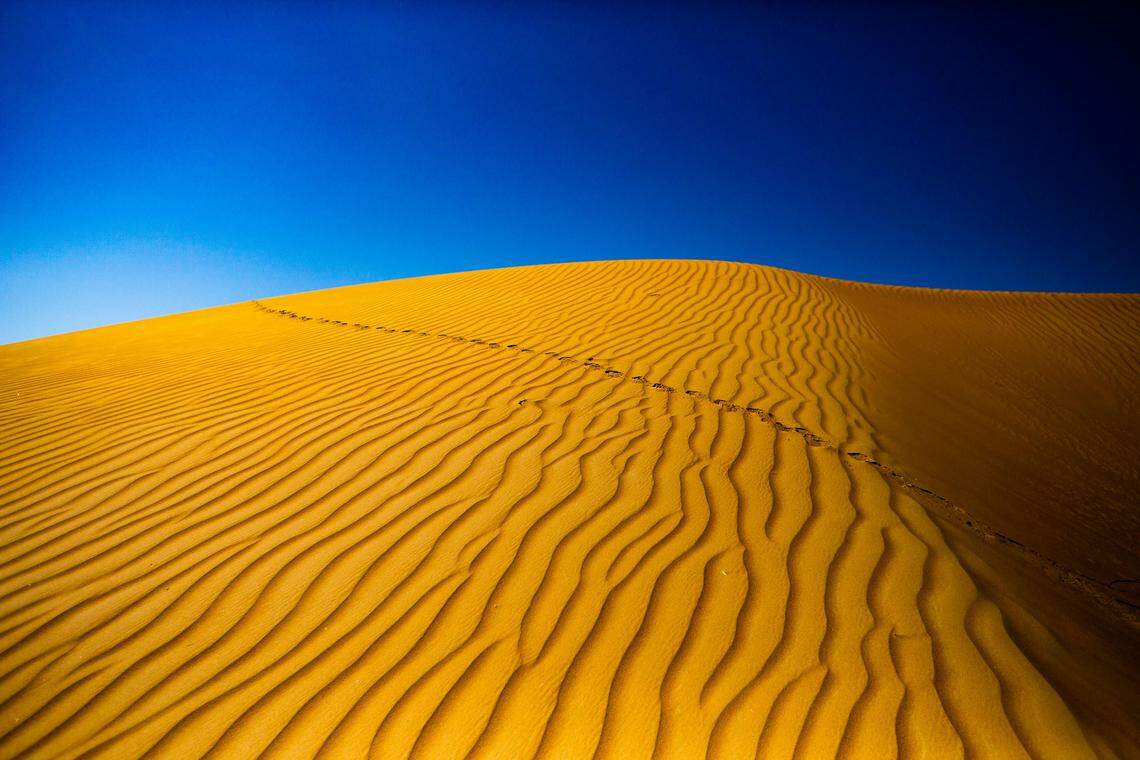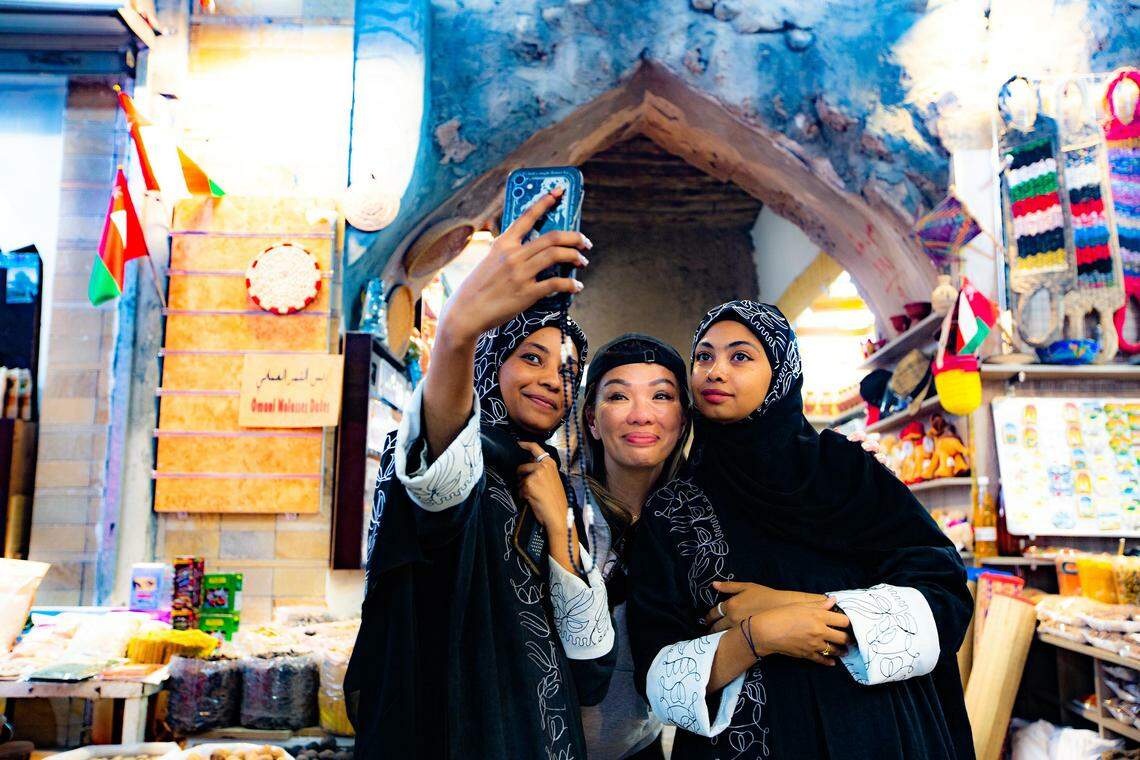Exploring underrated Oman, the next big travel destination
The surreal beauty of the Sultanate will soon put it on traveller’s bucket lists

IT IS 5.30 IN THE morning in Muscat. From the cliff-top room at the Shangri-La Al Husn Resort overlooking the Gulf of Oman, the sun is a gold and crimson orb peeking over the horizon.
Tell someone you are visiting Oman on holiday and the response is likely to be, “Why?”. With pandemic restrictions eased, Singaporeans are beating a path to old favourites, sending London and Paris air ticket prices soaring, and turning Niseko Village into a snowy Holland Village. Oman is hardly on any traveller’s radar. But the Sultanate has always carried an air of mystique: golden desserts under impossibly blue skies, oases in arid mountain ranges, forgotten mud villages on hillsides. And then there are the Bedouin, a people who have made the desert their home.

At first blush, Muscat is bland. It sprawls along a magnificent coast, and boasts a few grand buildings such as a marbled Royal Opera House. Otherwise, the flat-topped low-rise buildings are generally unremarkable and most, by royal decree, are painted a neutral white or beige.

Wahiba Sands’ desert landscapes
However, just a two-hour drive away lies Wahiba Sands where the Bedouin still live in tents, raise camels for food and transportation while their womenfolk weave colourful bags and bracelets for sale.
We stop at the edge of the desert for coffee and enter a makeshift building with a mud floor and a roof constructed from the spines of palm leaves. The sunlight filtering in dapples the communal mats where we sit shoeless and cross-legged to enjoy Omani coffee served with locally grown dates that accompany every meal. The brew is like Singapore kopi, sipped from small ceramic cups. Ahmed, our driver, tells us it is considered inhospitable for the host not to keep your cup filled and shows us how to shake it to indicate that we have had enough.
We head deeper into the dunes: endless rolling hills gleaming, sometimes yellow, sometimes orange, in the harsh sun. Our hiking shoes sink into the soft sand and Ahmed advises taking them off. But it is too hot to walk barefoot although the solitary trail of camel footsteps tells the story of one animal’s journey. It is in such unforgiving conditions that the Bedouin have made a life, over centuries.
A NEWSLETTER FOR YOU

Lifestyle
Our picks of the latest dining, travel and leisure options to treat yourself.

The rugged beauty of Wadi Bani Awf
Wadi is the Arabic word for valley, and Oman, with mountain ranges everywhere, is full of them. The valleys are filled with rocks but dotted with oases. The most spectacular of the Wadis is Snake Canyon (Wadi Bani Awf). Our guide Saeed has come equipped with helmets, flotation vests and abseiling harnesses. The “easy to medium” difficulty level promised by the tour operator starts to appear more aspirational than representative.
The trek is challenging from the beginning. We walk on loose stones and clamber over large rocks. The gorge is narrow, flanked by vertical mountain faces. It is difficult to describe the dramatic and other-worldly scenery without referring to computer-generated effects of a blockbuster movie. This is nature, powerful and raw, displayed in granite mountains honed to smoothness by water pressure applied over millennia.
The path becomes less navigable and we arrive at the abseiling point. Staring down at the hard rock below, you discover that a three-metre drop seems much further when you’re looking from the top.
The trek continues for two more hours. We slide, scrabble and swim from one jaw-droppingly beautiful vista to the next, all without meeting another human. It is a three-km all-body workout, including diving off cliffs into 15-degree emerald pools, the cold water a shock of exhilaration to the system.
It should have been tiring but the sense of discovery and wonder keeps fatigue at bay. Our muscles would pay the price tomorrow.

Hustle and bustle at Nizwa and Jabal Akhdar
We arrive at the Green Mountain (Jabal Akhdar) after a stop to admire Oman’s Grand Canyon, another natural feature that is at once severe and majestic. Nearby is Nizwa, an old trading city. Serendipity has brought us in time to visit the cattle market that takes place every Friday morning near the souq, its central market place.
By 8am the boisterous goat auction is underway. Sellers are leading their prized specimens in a circle and shouting out prices to would-be buyers, who occasionally check the animals’ teeth and joints. It is organised chaos, between the shouting, the haggling and some very uncooperative animals. We are reminded of peak hour traffic in Newton Circus, except with cattle not cars, some going against the direction of traffic. Our guide, Khalil, warns us to beware the occasional runaway bull.

Khalil has come garbed in traditional Omani dress, a turban on his head and a ceremonial dagger around his waist. He is stopped time and again by tourists wanting a photograph. Two Hijab-clad girls wave their camera phones in our direction but this time, apparently, it is me they want a picture of. A Chinese woman is a novelty to be captured for social media.
At Nizwa Fort we stumble onto a traditional band, marching, dancing and waving swords in time to their acapella song. Their enthusiasm and energy are palpable. Little Omani boys have joined the contingent and someone thrusts a rifle on our guide as a prop, urging him to join in.

Oman today
Omanis are warm people who greet strangers on the street and tap their car horns to passersby. They take pride in their solidarity. Here, Shia and Sunni cohabit peacefully, and the people lament the internecine battles of other Gulf states.
But the old ways run deep. One driver Mazin, 29, is a civil engineer who spent four years studying in Ireland. He has never dated, even when abroad, and will let his parents choose him a wife.
This patriarchal culture is alien to progressive Singapore, making the discovery of the country even more fascinating. Oman will soon be on travel bucket lists; what a privilege to visit while we could still enjoy the silence of solitary wonder.
KEYWORDS IN THIS ARTICLE
BT is now on Telegram!
For daily updates on weekdays and specially selected content for the weekend. Subscribe to t.me/BizTimes
BT Luxe
Private helicopter wine tours, coastal golf and indulgent spas: Luxe escapes to elevate your next vacation
Charmain Kwee: Steering a car empire at 27
Vacheron Constantin breaks record for most complicated watch
From safari bush retreats to coastal havens: These Top End stays offer the perfect blend of wilderness and luxury
Lee Hui Li: Empowering women, embracing change
Tan Min Lan: Deftly navigating the complexities of leadership
